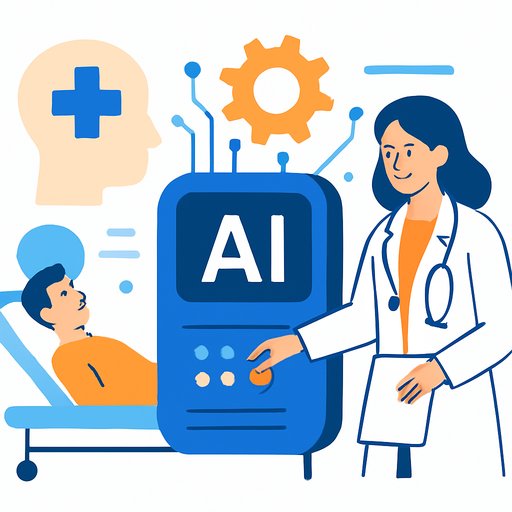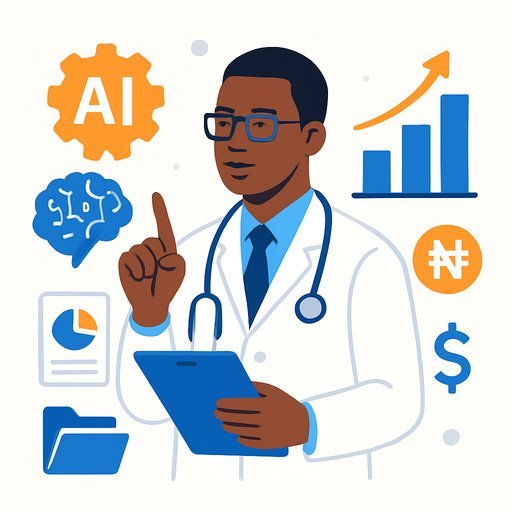Generative AI Can Make U.S. Healthcare Safer, Smarter, and Affordable-If We Act Now
Healthcare is at a breaking point. Average costs now exceed $14,000 per person, employer premiums are projected to jump 9%, and a family plan is nearing $30,000. Despite the spend, the U.S. trails peer nations in life expectancy, maternal mortality, and childhood deaths.
Generative AI offers a practical path forward. It can help save lives, cut waste, and give clinicians back time for patients. The window to move from pilots to standard of care is open, but it won't stay open long.
1) Closing Medicine's Knowledge Gap
Every 26 seconds, a new medical study drops-more than 5,000 a day. No human can keep pace. GenAI can scan and synthesize the full literature in seconds, bringing the latest evidence to the bedside and supporting faster, more accurate decisions.
Adoption is already here: three in five healthcare professionals use GenAI regularly, with near-universal use among trainees. One striking case: a teen with a rare autoimmune condition stumped five major centers; a sixth used a large language model, which listed the correct-extremely rare-diagnosis first. Soon, patients won't worry when clinicians consult GenAI. They'll expect it.
2) Empowering Patients Everywhere
Our care model assumes the best place for care is a clinic or hospital. That breaks down with chronic disease. Sixty percent of Americans live with at least one chronic condition, and 42% have two or more. Better control could prevent up to half of heart attacks, strokes, cancers, and kidney failures-saving an estimated $1.5 trillion annually.
Connected to wearables and home diagnostics, GenAI can interpret blood pressure, glucose, oxygen levels, and symptoms in real time, flagging problems early. For heart failure, it can detect fluid overload days before an ED visit. As home testing grows, it can guide next steps and even trigger a telehealth slot when warranted. For background on chronic disease prevalence, see the CDC overview.
3) Preventing Medical Errors
We have protocols. We don't always execute them under pressure. The result: medication errors, wrong-site surgeries, and preventable infections that contribute to an estimated 371,000 deaths each year.
With multimodal capabilities-vision, speech, and text-GenAI can observe care in real time and compare actions to accepted safety standards. If a critical step is missed, it can prompt before harm occurs. This augments clinical judgment and reduces the moral injury that follows preventable harm.
4) Delivering Smarter, More Personalized Care
Treating everyone the same sounds fair. In practice, it leads to missed deterioration for some and unnecessary interruptions for others. GenAI can continuously model bedside trends-heart rate and rhythm, blood pressure, oxygen levels-and flag risk hours before a crisis.
Nurses can focus on the few who need immediate attention while letting stable patients rest. Recovery accelerates. Sleep improves. Outside the hospital, GenAI trained on anonymized patient-clinician conversations can give families accurate guidance at 2 a.m.-from fevers to chronic symptom flares-backed by current evidence.
5) Unlocking Medicine's Hidden Data
Healthcare is drowning in data and starving for insight. A typical hospital's bedside monitors alone generate about a terabyte a year, and roughly 97% goes unused. Inside that signal is operational gold: what works, for whom, and when.
GenAI can analyze this data to compare diagnostic and treatment pathways, highlight the approaches that deliver the best outcomes, and surface technique-level insights from surgical robots and cath labs. Research cycles that took years can compress to weeks, accelerating improvement without cutting corners.
From Potential to Practice: How Leaders Can Move Now
- Start with high-impact, low-risk use cases: discharge summaries, patient messaging drafts, protocol checklists, and ambient documentation.
- Stand up a governance council across clinical, IT, legal, and quality. Set approval gates, audit trails, and human-in-the-loop requirements.
- Choose models with healthcare-grade privacy, PHI controls, and clear update cadences. Validate on your data. Monitor drift.
- Embed into workflow, not beside it: EHR-integrated prompts, one-click accept/edit, and role-based views for nurses, physicians, and pharmacists.
- Measure what matters: safety events, time-to-diagnosis, LOS, readmits, staff satisfaction, and cost per encounter.
Equity, Safety, and Trust
Bias won't fix itself. Use diverse training sets, run fairness audits by condition and demographic, and keep clinicians in the loop for high-stakes decisions. Be transparent with patients about where AI is used and how it's supervised.
Nationally, policymakers can help by updating payment models to reward prevention and signal coverage for proven AI-enabled services. The data already shows where the U.S. stands; see the Commonwealth Fund's comparison of outcomes across high-income countries here.
The Moment for Swift, Bold Action
Incremental fixes haven't bent the cost curve or moved outcomes. GenAI gives clinicians leverage: faster evidence synthesis, earlier warnings, fewer errors, and care that fits patients' lives. If we build responsibly and move with urgency, we can make high-quality care affordable and accessible across the system.
If your team is upskilling for clinical AI, you can explore practitioner-focused training resources at Complete AI Training.
Your membership also unlocks:






